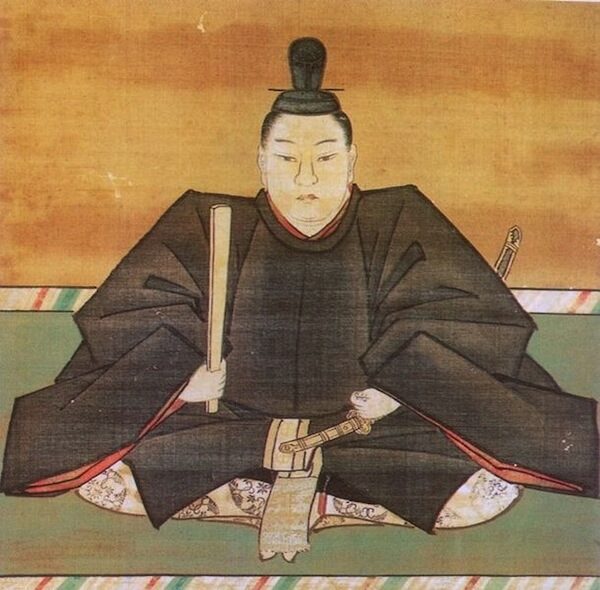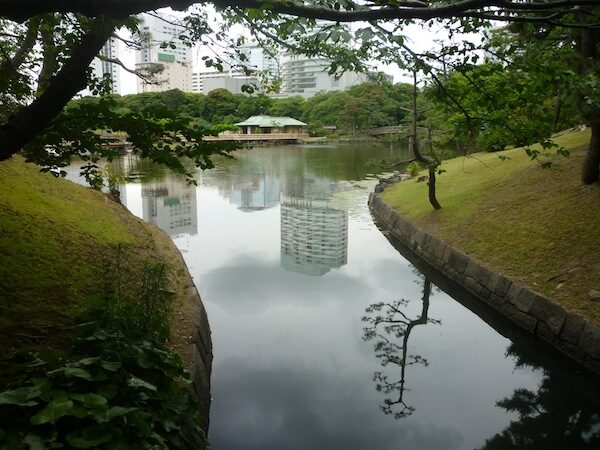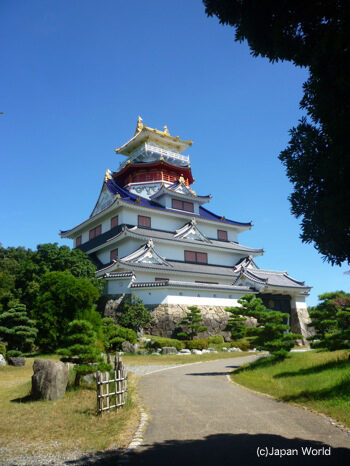Siege and Battle, 28 June 1575, Mikawa (Aichi Prefecture)
Takeda Katsuyori (12,000) VS Oda Nobunaga (30,000) and Tokugawa Ieyasu (8,000)
Bound spread-eagled with straw ropes on a double horizontal-beamed wooden cross, Torii Suneemon was put on display across the river from Nagashino Castle. “Tell them reinforcements aren’t coming,tell them to give up the castle and come out!” hissed one of his captors.
Torii looked up at the castle, he could see the samurai inside watching him from the lookout towers and from behind the fortress walls. “Men of Nagashino Castle….,” he yelled in a loud voice, “Don’t give up! Ieyasu’s men are on the way! Hold on a little longer!” he blurted before being silenced by a spear thrust to the stomach.

Torii had been one of the 500 samurai stationed in Nagashino Castle just outside of modern day Shinshiro City, Aichi Prefecture when it had been surrounded by 15,000 soldiers of the feared Takeda clan.
The Castle at Nagashino
Nagashino Castle was very well situated, built high on a cliff edge, at the fork where the Ure and the Kansa Rivers split and acted as a natural defense. It was a strategically important castle, guarding the Tokugawa held Mikawa provinces from the threat of the
Takeda of the north. The Takeda, led by Katsuyori, son of the famed Takeda Shingen as on a major campaign to reach the capital, Kyoto in an effort to gain control the nation.

To get to Kyoto, they first had to take Mikawa and Owari, lands held by allies Tokugawa Ieuyasu and . Nagashino Castle was important as it threatened the Takeda’s supply lines, vital for taking the nation.
Nagashino Castle was constructed by the warlord Imagawa Ujichika in 1508. In 1573, the castle came under the control of Tokugawa Ieyasu, who had it enlarged and strengthened on realizing the dangers of the Takeda, who had soundly defeated the Tokugawa forces in the battle of Mikatagahara earlier that year. Interestingly, Ieyasu had installed a former Takeda vassal, Okudaira Nobumasa as the castle’s commander.
In June of 1575 the Takeda forces surrounded the castle, laying siege for just over a week before the low ranked but brave Torii had volunteered to leave the castle, swimming the river and cutting through nets set by the enemy, to call for back up from Tokugawa Ieyasu in Okazaki. After alerting Ieyasu and requesting reinforcements, Torii quickly returned to Nagashino where he had been captured and tied to the cross on the riverbank opposite the castle and ordered to tell his compatriots inside to give up. When he had yelled encouragement to the samurai inside, he had been killed in full view of the castles’ men.(One of the Takeda forces, Ochiai Michihisa had been so impressed by the low ranked Torii’s bravery and loyalty, he had a battle flag made featuring an image of the crucified Torii.)
The Arrival of the Forces
The Tokugawa and allied Oda clan forces finally arrived at the scene, leading to a major turning
point in Japan’s history and samurai warfare, the Battle of Nagashino and Shitaragahara.

This is the site of one of the most famous samurai battles, the Battle of Nagashino, also known locally as the Battle of Shitaragahara, that took place on May 21st, 1575.
The Takeda army were a battle hardened, well trained samurai battalion. The Takeda had soundly defeated the Tokugawa at the Battle of Mikatagahara some years before, and were confident of another victory. This time however, the concern was the Tokugawa’s strong ally, Oda Nobunaga.
The Oda clan came to the rescue a week later with 38,000 soldiers. Interestingly, along with their weapons and armor, each
Oda samurai carried a long, thin log with them.
The logs were used to build two kilometers of simple wooden palisade along the western side of the valley at the foot of the rolling hills. Running through the middle of the valley was the small Rengo River.
Either side of the river were rice paddies. On the opposite side, the Takeda had arranged themselves into battle formations on the slopes of the low mountains.

Behind the wooden fencing waited some 3,000 Oda troops armed with matchlock guns. The gun had only been introduced to Japan some twenty years previously by Portuguese traders, but already the nature of the weapon had been embraced by the samurai.

The Takeda forces, their front line samurai dressed in red lacquered armor were compelled to attack. Running onto the narrow battlefield, they first encountered the soft muddy rice paddies, which caused a slowdown, they then had to ford the Rengo River, and tackle more rice paddies before reaching the fence. Hardly any of them got that far.
The Oda forces gunners felled them immediately in a great blast of gunfire!

Katsoyori knew that the guns took at least 40 seconds under ideal conditions to prime and reload, and battle conditions were far from ideal. After the first volley, he quickly sent a second wave of samurai into the fray. Within seconds they were felled by more matchlock fire. Katsuyori, shocked, sent yet another line of troops, they too were mown down before they could reach the river.
Nobunaga, realizing the projectile weapons shortcoming, had organized his gunners into lines of three around the barricades. After the first guns were fired, the second line took aim and shot. Once their breaches had been emptied, the third line took aim. By then, the first line had reloaded and were ready to continue shooting the enemy, and so on in a machine gun-like fashion.
Eight hours later, 10,000 Takeda and 6,000 allied troops lay dead across the valley.
The much feared Takeda clan had been decimated and would end seven years later.
KIA: (Takeda) Takeda Nobuzane, Baba Nobufusa, Yamagata Masakage, Naito Masatoyo, Hara Masatane, Sanada Nobutsuna, Sanda Masateru, Kasai Mitsuhide, Wada Narishige,


